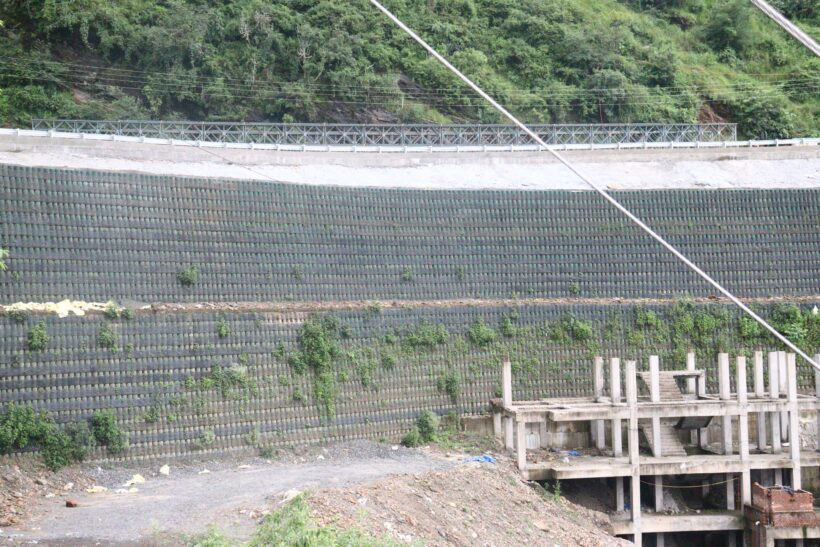Retaining walls
What is a retaining wall?
A retaining wall is a structure that checks soil eroding and sliding. It may be used to control runoff and prevent flooding. The choice of materials like masonry, wood, or concrete for retaining walls depends on the design requirements and site limitations.
What is the purpose of retaining walls?
They provide support to steep grade changes by stabilizing slopes that occur when going from one level to another. This enables keeping water away from sloping ground, making the area suitable for construction activities as well as landscaping works. These, therefore enhance utilization and safety in areas with hills or uneven terrain.
How do retaining walls work?
By resisting the lateral forces exerted by the soil mass retained, retaining walls function. Various building materials and engineering techniques are employed to achieve this resistance. When designing retaining walls, it is important to consider issues like soil types, drainage systems, load-bearing capacities, and so on for them to be sustainable in the long run.
What are the types of retaining walls?
Different types of retaining walls are used depending on the application and site conditions:
Gravity retaining walls
Gravity-retaining walls rely on their weight to resist the forces exerted by retained soil. For the most part, they are built from dense materials such as stone, concrete, or masonry. Their stability lies in their massiveness which enables them to resist lateral pressures exerted by soils. These walls are more suitable for short heights of retention walls and are a common feature in residential landscaping and small-scale civil projects.
Cantilevered retaining walls
Cantilevered retaining walls hold back the earth with vertical arms while maintaining horizontal bases for stability. Stability is guaranteed by cantilevered arms, the weight of the soil they contain supporting them alone or with cantilevered means. They are largely made from reinforced concrete. These are often built in commercial and industrial projects where taller retaining walls are required to make good use of materials and provide a strong base.
Embedded retention walls
Embedded retention walls include both sheet pile walls and anchored retaining walls.
- Sheet pile retention walls: These are constructed using steel, vinyl, or wooden boards which are driven into the ground and can be used in situations where the space is very small for soft soils. Such pile walling are best suited in waterfronts, metropolitan areas, and temporary excavation support that requires their installation within confined spaces or even in weak soil conditions.
- Anchored retaining walls: Employ cables or stays that have been anchored deep into the soil or rock behind the wall to give it added support. Additional load-bearing capacity may be necessary on occasion, and these walls are often joined with other types of retaining walls to enhance stability, which can serve as a scenario of use. Cases where such walls could be used include highway cuts, bridge abutments, and high-rise building foundations necessitating deep excavation or load-bearing for support.
Reinforced soil or mechanically stabilized earth (MSE)
Geosynthetic reinforced soil retaining walls, commonly called MSE walls, are constructed using geosynthetics to reinforce the soil in front of them. These walls have many advantages; they are flexible and cost-effective besides being capable of being built to great heights. MSE walls can be applied under various conditions at the site and are easy to construct. They can be used for different purposes such as highway embankments, bridge abutments, or large retaining structures in a variety of environments. This results in their systems with geosynthetics giving way to quick and relatively inexpensive construction with excellent long-term performance.
Know these types along with specifying their applications so that you can select the most suitable type of retaining wall for your project that guarantees both stability and efficiency.
What is the use of geosynthetics in retaining walls?
These textiles also serve to reinforce, drain, and divide different sections of a retaining wall. Examples of commonly used ones include:

- Geotextiles: These fabrics allow water to pass through while separating different layers; they also reinforce slope and improve drainage capacity. In addition to controlling erosion, these textiles offer structural support and enhance drainage in soils.
- Geogrids: Such elements look like meshes that support the soil. They help in increasing its bearing capacity by distributing stress over a larger area.
- Geonets: These structures are just used for draining water. These three-dimensional features have good drainage channels that hinder water logging behind retaining walls.
- Geocomposites: Geo composites that are made of geotextiles, geo grids, and geonets serve as reinforcements, filters, and drainage in constructing retaining walls.
- Geocells: These three-dimensional structures confine the soil to provide lateral support and thereby, reduce soil erosion. They also help to enhance load-bearing capacity and appearance in retaining walls.
Advantages of using geosynthetics in retaining walls
Using geosynthetics to construct retaining walls has numerous benefits.
- Cost Effective: This minimizes expensive materials use and significant earthwork hence reducing the overall building cost due to the use of geosynthetics.
- Environmental Benefits: Soil conservation by increasing soil stability through geotextiles results in less ecoregion.
- Versatility: For different projects, this makes them versatile because geosynthetics can be used with various soils and situations.
